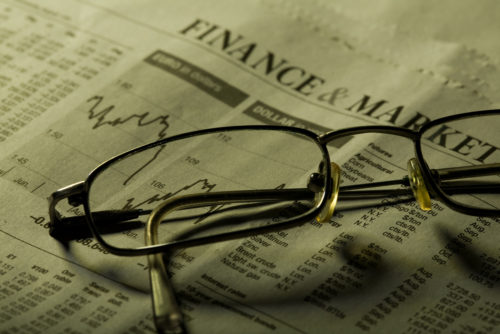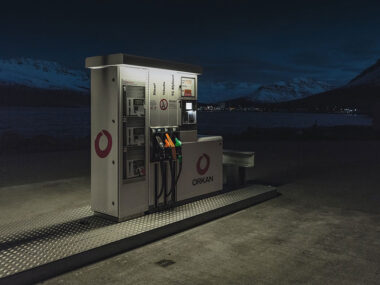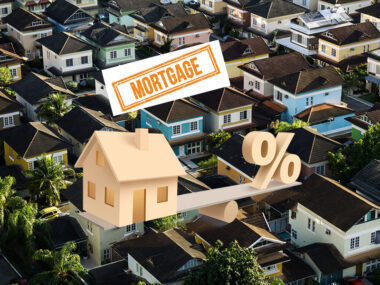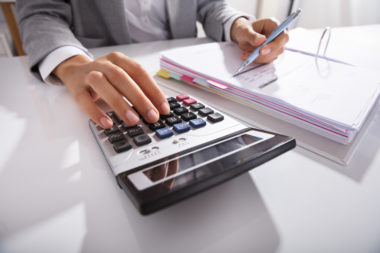According to the National Bureau of Economic Research, the definition of a recession is, “A period of falling economic activity spread across the economy, lasting more than a few months.” This period of downturn is officially called a “recession” if it lasts in the region for at least two consecutive quarters, which are three-month periods identified on a financial calendar. When a recession occurs, the economy slows down and everyone is affected, from corporations to small business owners to everyday consumers.
A depression can be defined as an extreme recession because it occurs when a recession happens but sticks around for much longer. You would call an economic downturn a depression instead of a recession if the economy stayed down for over three years or if the gross domestic product (GDP) declined by at least 10%.
There are specific economic indicators that are used to identify both a recession and a depression. When analyzing the economy, a visible downturn, stagnation, or slow down in one or more of five economic factors can be indicators that a recession has hit. The five indicators that are closely watched to identify a recession include:
- Real GDP.
- Employment.
- Income.
- Manufacturing.
- Retail sales.
If one or more of these indicators remained low or stagnant for more than three years, this period could be defined as a depression.
Table of Contents
Recession vs. Depression
While the economy may rise and fall throughout the country every day, we enter a period of recession when it’s stayed low for at least two consecutive quarters. “Recession” can sound like a scary word, but it’s actually part of the normal rise and fall of the business economy. The economy can’t maintain momentum and growth constantly. In the grand scheme of the long-term economy, recessions are short-term slowdowns that are bound to occur.
On the other hand, depressions occur in extreme economic conditions. When a recession stays around longer than three years, the period is identified as a depression. A depression is usually characterized by a sharp cut in employment and production, which has extremely negative effects on the general public and how much consumers can afford to pump back into the economy.
What Is a Depression?
A depression is a dramatic fall in the GDP or other economic indicators that lasts for more than three years and has a lasting effect on businesses, consumers, and the economy. Depressions are drastic and rare, so much so that only one has ever been recorded in the history of the U.S.: the Great Depression.
This depression began on October 24, 1929, a day now referred to as “Black Thursday.” The stock market bubble burst after years of careless investing and an unprecedented number of stock sales began. A record of 12.9 million shares were traded. The problem was the U.S. was already in a recession, so this stock market plunge just made things worse and longer-lasting. The Great Depression lasted for an entire decade and led to worldwide problems of unemployment, hunger, poverty, and political discord.
What Is a Recession?
When there are several slow quarters but an overall trend of growth, we’re in a recession. A recession usually only lasts a few months, but if it sticks around for more than three years, it’s then considered a depression.
We don’t have to look too far back in U.S. history to examine the latest recession. During the last two quarters of 2008 and the first two quarters of 2009, the U.S. was in a recession. The GDP fell by 4.3%, about 16,000 jobs were lost, and the demand for housing slowed, causing home prices to drop significantly. This recession lasted 18 months until the economic sectors began to gain speed again.
What Happens During a Recession?
An economic recession is a short-term blip in the long-term radar of the economy. While these periods of time seem bleak due to high unemployment rates and low retail sales, they’re necessary for a healthy business cycle and for long-term growth.
In a recession, the economy slows due to one or more factors taking a hit. All of these factors are closely related, so when one falters, it can cause the entire economy to enter a recession. For example, if the manufacturing industry takes a hit, manufacturing jobs can begin to disappear. When consumers lose their jobs, they’re less likely to spend money.
Therefore, retail sales begin to falter and retail businesses are more likely to layoff workers due to their stagnation in profit. Since all these economic sectors are related to each other, when one slows, so do the others. As soon as one begins to grow again, it’s likely that the other sectors will as well and the recession will end.
Benefits to a Recession
While recessions may seem awful, they actually change and develop our economy and our world. An economic recession can cause structural changes to our economy, which is what occurred during the Industrial Revolution. A recession caused many farmers to close up shop. However, machines and inventions, such as the steam engine, needed operators. Farmers took on these jobs, growing the industry and creating the Industrial Revolution. Recessions can identify outdated technologies and eliminate these industries, making room for new fields.
When a recession occurs, economic rules are revisited. Any outdated laws are rewritten, allowing the economy to eventually grow more steadily. Since recessions hinge so heavily on retail sales, consumers can take back their purchasing power during a recession. Minimum wage laws are also often examined more closely to ensure consumers can come back stronger than ever when the recession is over.
What Causes Economic Recession?
There are many theories as to what causes an economic recession. Some of these theories are based on specific economic factors while others analyze potential financial or psychological factors that contribute to a recession.
Recession Indicators
There are specific leading indicators that can warn economists that a recession may be coming, including the:
- ISM Purchasing Managers Index.
- Conference Board Leading Economic Index.
- OECD Composite Leading Indicator.
There are also secondary or, coincident indicators, of a recession, including various data sets from the U.S. government, such as housing starts from the U.S. Census Bureau. Since this data is used to predict the GDP, it can be a helpful indicator of the upcoming economic forecast. Lagging indicators are used to confirm the country is in a recession, such as a rise in unemployment or a fall in retail sales.
What Happens During a Depression?
A depression is a prolonged downturn in economic activity. Essentially, an economic depression is an extreme recession that lasts three or more years or that includes a decline in the GDP of at least 10%.
During a depression, the economy basically shuts down due to a decline in investments and a decrease in consumer confidence. The following factors are characteristics of the economy during a depression:
- Less available credit.
- A substantially higher unemployment rate.
- Defaults on sovereign debts.
- A reduction in trade and commerce.
- Volatility in currency values.
- More frequent bankruptcies.
- Declined output.
What Causes Economic Depression?
The Great Depression was caused by questionable monetary policies that are no longer practiced today. The cause of an economic depression may be attributed to deflation, which is a decline in prices for services and goods. It usually occurs along with a contraction in the supply of money and credit. With deflation, consumer purchasing power rises.
When the stock market crashed in 1929, the Federal Reserve continued hiking the interest rate to attempt to make more profit. However, this backfired and triggered a huge deflation in the economy. With prices declining by about 10% each year, consumers got hungry for more purchasing power. They waited to purchase goods and services until they were sure prices were at the bottom, which didn’t help get the country out of the depression quickly.
Retail sales are just one component of the economy, but without this sector succeeding, the economy couldn’t get back on its feet. Banks learned their lesson from this depression and now use expansionary monetary policy when inflation occurs to help the economy and prevent another depression.
Image Source: https://depositphotos.com/





